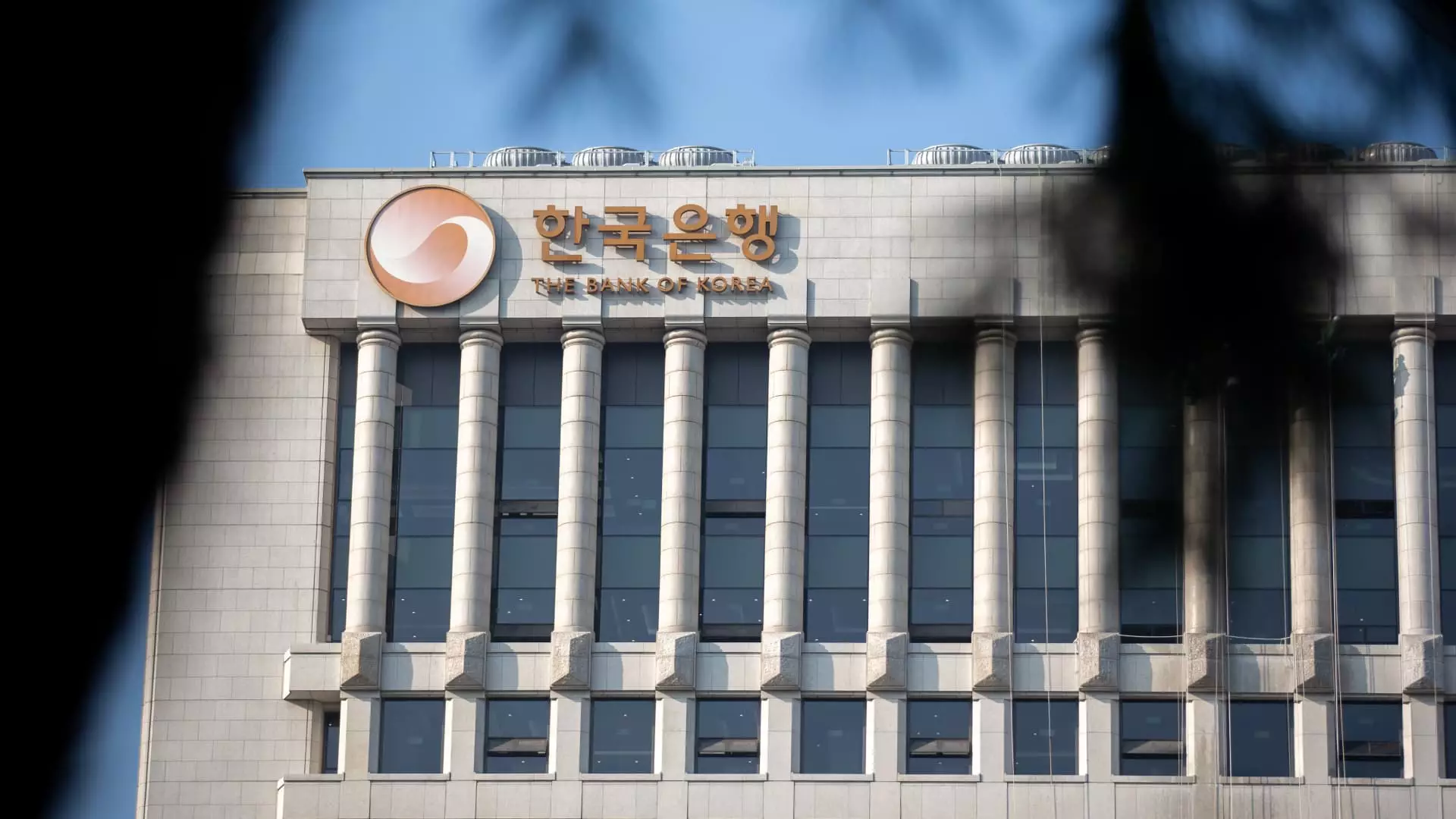In a bold move signaling a deeper financial malaise, South Korea’s central bank, the Bank of Korea (BOK), recently instituted a quarter-point reduction in its policy interest rate, lowering it from 2.75% to 2.5%. This adjustment, marking the fourth reduction in just six meetings, is indicative of an economy grappling with mounting pressures. Set against a backdrop of significant political instability and a turbulent international trade environment influenced by the Trump administration’s tariff tactics, this decision appears more reactive than proactive. The implications of this monetary tightening echo a broader narrative of economic vulnerability that Koreans cannot afford to overlook.
The BOK’s statement suggests a grim outlook for the nation’s economic growth, forecasting considerable declines amid stable inflation rates. This is worrisome, as it can perpetuate a cycle of stagnation. Economists might argue that such a rate cut is intended to soften the blow of a forecasted economic slowdown, but in reality, it may hide a more prolonged vulnerability. When political chaos and external economic threats converge, as they have with the recent upheaval resulting from former President Yoon Suk Yeol’s ousting, the implications for everyday citizens grow dire.
The Shadow of Political Upheaval
Political instability in South Korea is not just an abstract concept; it has concrete ramifications for the economy and the social contract. The turmoil surrounding the ill-fated martial law attempt by Yoon Suk Yeol, culminating in his impeachment, has amplified uncertainty. With a presidential election set for June 3, anticipation builds among voters who seek stability and progress. However, the timing could not be worse, as the political backdrop complicates trade negotiations with the United States, particularly regarding the recently imposed reciprocal tariffs.
While the upcoming elections might promise fresh leadership, they also come with risks. The outgoing administration’s legacy is not just one of controversy but also of economic stagnation—an environment that hinders the incoming president from initiating necessary fiscal reforms. Gareth Leather from Capital Economics hints at the potential for consumer spending recovery through new fiscal stimulus; however, such optimism must be tempered with realism. The cyclical nature of South Korea’s economic struggles, exacerbated by the declining property sector and export disruptions, points to a reality where progress seems elusive.
Global Ripple Effects and Economic Realities
The external pressures on South Korea’s economy are accentuated by Trump’s heavy-handed tariffs, which represent not just economic friction but a strategic challenge. A potential trade deal looms on the horizon, and while optimism has been promised within government ranks, apprehension remains palpable. The 90-day tariff suspension provides a temporary reprieve; however, without a well-structured agreement, it’s merely a band-aid on a festering economic wound. The stark reality is that geopolitics play a significant role in the broader economic narrative, affecting trade relations and investor confidence.
The recent contraction of South Korea’s GDP by 0.1% in the first quarter raises alarming questions. This downturn, the first since late 2020, paints a picture of an economy on the brink of stagnation, struggling under the weight of both homegrown and international troubles. The BOK’s revised forecast predicting a mere 0.8% GDP growth for 2025 signals a need for intervention. As the Kospi index reportedly responds with a surge following the rate cut, one must question if this temporary market buoyancy masks deeper systemic vulnerabilities or if it is merely a fleeting illusion.
Looking Ahead: A Call for Thoughtful Leadership
Navigating South Korea’s economic landscape calls for thoughtful leadership and strategic foresight from the next president. The incoming administration must prioritize both stabilizing the political environment and orchestrating effective economic policies. It is essential to foster conditions that encourage domestic growth while finding ways to mitigate external pressures.
With citizens looking for tangible solutions, the combination of a new political mandate and responsive monetary policy could hold the key to revitalization. The perils of stagnation are real, and the time for action is now. South Korea stands at a critical juncture, and how its leaders respond to these multifaceted challenges will shape the nation’s economic trajectory for years to come.


Leave a Reply